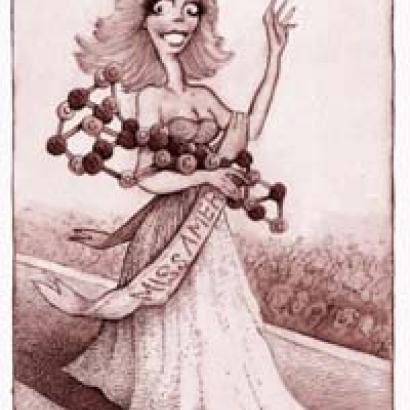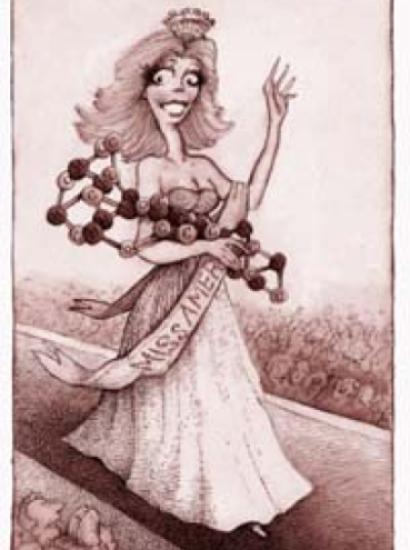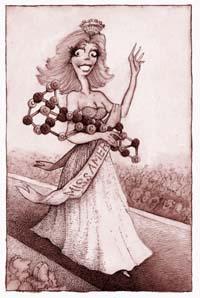- Law & Policy
- Regulation & Property Rights
- Science & Technology
- Economics
- Energy & Environment

GATTACA, a recent Hollywood science fiction film, suggests that human genetic engineering can work wonders but that the price may be too high. The film depicts a very near future in which high-tech breeding programs have suppressed not only physical ugliness, addictive behavior, and inherited disease but also humans’ hope, humor, passion, and faith. The film raises the fundamental question of the benefits and risks of human genetic engineering—but far less intelligently than Aldous Huxley’s novel Brave New World and less entertainingly than Mary Shelley’s Frankenstein.
These issues are topical. Last September, the National Institutes of Health convened a conference to debate the limits of genetic manipulation applied to humans for “enhancement.” Thousands of patients in twenty-four countries are already undergoing “gene therapy”—insertion of normal genes to complement those missing or defective—for diseases ranging from cystic fibrosis to cancer and AIDS.
But what about nontherapeutic uses of genetic engineering? Anticipating requests in the near future from people asking physicians for gene therapy to grow taller, increase muscle mass, or alter skin color, a few critics—including a few prominent gene therapy researchers—have expressed grave reservations. Professor W. French Anderson of the University of Southern California has written that “until we have acquired considerable experience with regard to the safety of [gene therapy] for severe disease, and society has resolved at least some of the ethical dilemmas that this procedure would produce, nontherapeutic use of genetic engineering should not occur.”
However, such views do not take into consideration the latitude that Western society affords those who choose to enhance their appearance or health in other ways. For example, drugs are not infrequently tested for relatively trivial indications, such as modest obesity, stuffy nose, age spots, and baldness. There have been numerous clinical trials of appetite suppressants, memory- and performance- enhancing drugs, and human growth hormone for hormonally normal but shorter-than-average children.
GENE THERAPY’S CONTINUUM
Gene therapy is part of a continuum of therapies that introduces new DNA or modifies existing DNA in patients. It includes organ transplantation from one human to another, vaccination (which results in the irreversible changes in blood cells’ DNA that mediate immunity), and the administration of drugs to activate dormant genes.
Western society already affords considerable latitude to those who choose to improve their appearance.
The medical and ethical issues raised by gene therapy, however difficult to resolve, are hardly unique. There is no basis for invoking more discriminatory and restrictive regulation for gene therapy than is in place for analogous experimental therapies. Arguments against testing gene therapy for enhancement should be weighed against society’s permissiveness toward experimental medical and surgical interventions generally and those intended for nontherapeutic purposes in particular.
RIGOROUS OVERSIGHT
Existing societal oversight of various activities is an important consideration. There is a vast array of entities, at many levels of government, that regulates gene therapy. In the United States, these include hospital-based institutional review boards, company- or university-based Institutional Biosafety Committees, the NIH Recombinant DNA Advisory Committee, the NIH director, and the Food and Drug Administration. This intensive and duplicative regulation offers a sharp contrast to the degree of oversight of a new surgical procedure, for example, which might be completely unregulated or subject only to approval of a hospital-based committee.
Patients’ psychological well-being and freedom to choose are also important considerations. “Mere” enhancement is not trivial to the adolescent boy who is six inches shorter than anyone else in his class or to many people of either sex who suffer hair loss. One need look no further than the demand for cosmetics, cosmetic surgery, and health clubs to be reminded how important people consider it is to look and feel good.
The issues surrounding whether a patient suffers from a condition that warrants treatment, equal access to therapy, and the relationship between medical intervention and discrimination are fundamentally no different for gene therapy than for other interventions. Therefore, innovations such as gene therapy, even when used for enhancement, should be treated similarly to other analogous medical interventions, except as scientific considerations may dictate. Such innovations should certainly not be rejected out of hand, particularly when existing societal oversight mechanisms subject them to an extraordinary level of review.
“Mere” enhancement is not trivial to the adolescent boy who is six inches shorter than anyone else in his class or to people of either sex who suffer hair loss.
The Economist asked in a 1992 editorial: “What of genes that might make a good body better, rather than make a bad one good? Should people be able to retrofit themselves with extra neurotransmitters to enhance mental powers? Or to change the colour of their skin? Or to help them run faster, or lift heavier weights?” Its admirably libertarian answer: “Yes, they should. Within some limits, people have a right to make what they want of their lives.”
In view of what people want and what society permits in other realms, therefore, should not those limits be very wide?
















